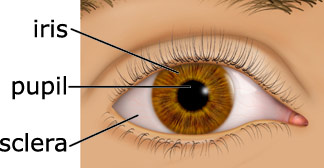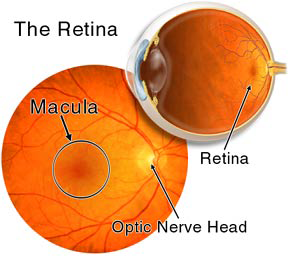 |
| Health Info Directory |
| Provide all information about knowledge ; Technology , Photography , Fashion & Models, Sport , Automotive , Health , Life Style , Bussiness , News , E-comers |
| Home / Aeromodeling Info directory / News From The Worlds |
Technology / Photography / Fashion & Models / Sport / Automotive / Health / Life Style / Bussiness / News / Galery Photo / Politics |
| Copyright www.knowledgeinfodirectory.50webs.com @ 2008 / Privacy Policy / Contact us by Email / Send us your article |
| Eye Anatomy |
 |
A guide to the many parts of the human eye and how they function. The ability to see is dependent on the actions of several structures in and around the eyeball. The graphic below lists many of the essential components of the eye's optical system. |
 |
 |
When you look at an object, light rays are reflected from the object to the cornea, which is where the miracle begins. The light rays are bent, refracted and focused by the cornea, lens, and vitreous. The lens' job is to make sure the rays come to a sharp focus on the retina. The resulting image on the retina is upside-down. Here at the retina, the light rays are converted to electrical impulses which are then transmitted through the optic nerve, to the brain, where the image is translated and perceived in an upright position! |
 |
Think of the eye as a camera. A camera needs a lens and a film to produce an image. In the same way, the eyeball needs a lens (cornea, crystalline lens, vitreous) to refract, or focus the light and a film (retina) on which to focus the rays. If any one or more of these components is not functioning correctly, the result is a poor picture. The retina represents the film in our camera. It captures the image and sends it to the brain to be developed. The macula is the highly sensitive area of the retina. The macula is responsible for our critical focusing vision. It is the part of the retina most used. We use our macula to read or to stare intently at an object. |
 |
What Is Cancer? Cancer is a term for diseases in which abnormal cells divide without control and can invade other tissues. Cancer cells can spread to other parts of the body through the blood and lymph systems. Cancer is not just one disease but many diseases. There are more than 100 different types of cancer. The main categories of cancer include: |
|
(For definitions of other cancer-related terms, see NCI's Dictionary of Cancer Terms.) Origins of CancerAll cancers begin in cells, the body's basic unit of life. To understand cancer, it's helpful to know what happens when normal cells become cancer cells. The body is made up of many types of cells. These cells grow and divide in a controlled way to produce more cells as they are needed to keep the body healthy. When cells become old or damaged, they die and are replaced with new cells. But sometimes this orderly process goes wrong. The genetic material (DNA) of a cell can become damaged or changed, producing mutations that affect normal cell growth and division. When this happens, cells do not die when they should and new cells form when the body does not need them. The extra cells may form a mass of tissue called a tumor |
 |
Not all tumors are cancerous; tumors can be benign or malignant.
|
Most cancers are named for the organ or type of cell in which they begin. For example, cancer that begins in the stomach is called stomach cancer. Some cancers do not form tumors. For example, leukemia is a cancer of the bone marrow and blood. Cancer StatisticsA new report from the nation's leading cancer organizations shows cancer death rates decreased on average 2.1 percent per year from 2002 through 2004, nearly twice the annual decrease of 1.1 percent per year from 1993 through 2002. (Read more about the Annual Report.) Estimated new cases and deaths from cancer in the United States in 2008:
NCI's Cancer Stat Fact Sheets provide frequently requested cancer statistics for a number of cancer types. Additional InformationFind a type of cancer: Cancers that are diagnosed with the greatest frequency in the United States are listed below. (Read more about Common Cancer Types.) |